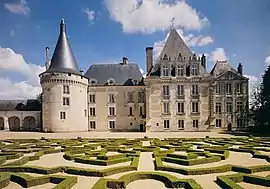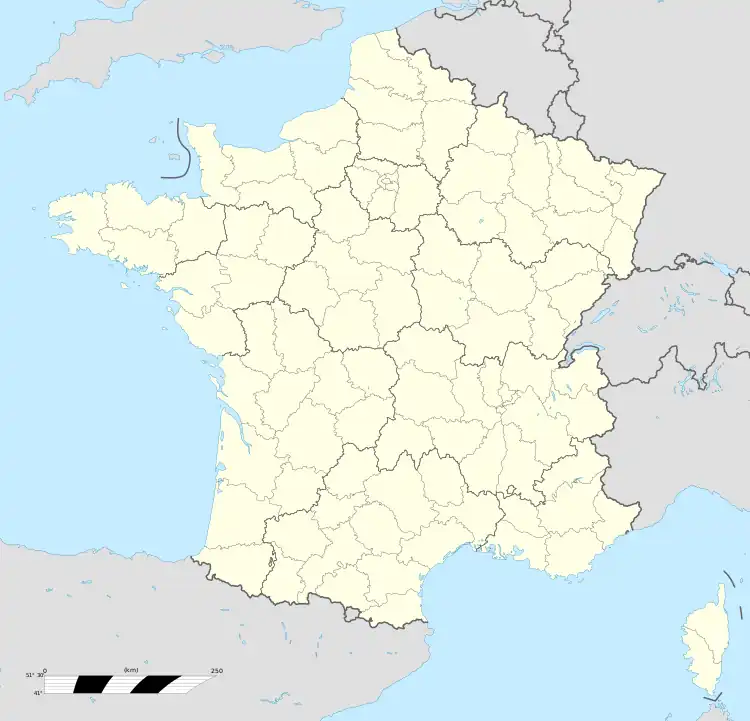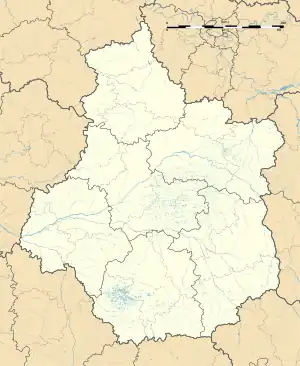Azay-le-Ferron | |
|---|---|
 Chateau | |
.svg.png.webp) Coat of arms | |
Location of Azay-le-Ferron | |
 Azay-le-Ferron  Azay-le-Ferron | |
| Coordinates: 46°51′09″N 1°04′12″E / 46.8525°N 1.07°E | |
| Country | France |
| Region | Centre-Val de Loire |
| Department | Indre |
| Arrondissement | Le Blanc |
| Canton | Le Blanc |
| Intercommunality | CC Cœur Brenne |
| Government | |
| • Mayor (2020–2026) | Christophe Jubert[1] |
| Area 1 | 60.95 km2 (23.53 sq mi) |
| Population | 852 |
| • Density | 14/km2 (36/sq mi) |
| Time zone | UTC+01:00 (CET) |
| • Summer (DST) | UTC+02:00 (CEST) |
| INSEE/Postal code | 36010 /36290 |
| Elevation | 77–143 m (253–469 ft) (avg. 102 m or 335 ft) |
| 1 French Land Register data, which excludes lakes, ponds, glaciers > 1 km2 (0.386 sq mi or 247 acres) and river estuaries. | |
Azay-le-Ferron (French pronunciation: [azɛ lə fɛʁɔ̃]) is a commune in the Indre department in central France.
It is situated in the parc naturel régional de la Brenne, spanning parts of the historic province of Berry and Touraine. Azay-Le-Ferron takes its name from ironworks, from which iron was extracted as late as the nineteenth century, and a deformation of aqua, "water".
The Château d'Azay-le-Ferron, upon which the ancient commune depended, ranges from fifteenth century construction—the round tower—to eighteenth century, harmonized by the warm stone of which it is built and the blue-gray slates of its various roofs. The ancestral seat of the family Hersent Luzarche, bequeathed to the city of Tours in 1951, now houses a collection of furniture, both of the French Renaissance and in Empire style. It is surrounded by a series of parterre gardens, some with clipped topiary, and a landscaped park.
Population
| Year | Pop. | ±% p.a. |
|---|---|---|
| 1968 | 1,364 | — |
| 1975 | 1,314 | −0.53% |
| 1982 | 1,146 | −1.94% |
| 1990 | 1,036 | −1.25% |
| 1999 | 991 | −0.49% |
| 2009 | 934 | −0.59% |
| 2014 | 860 | −1.64% |
| 2020 | 870 | +0.19% |
| Source: INSEE[3] | ||
See also
References
- ↑ "Répertoire national des élus: les maires" (in French). data.gouv.fr, Plateforme ouverte des données publiques françaises. 13 September 2022.
- ↑ "Populations légales 2021". The National Institute of Statistics and Economic Studies. 28 December 2023.
- ↑ Population en historique depuis 1968, INSEE